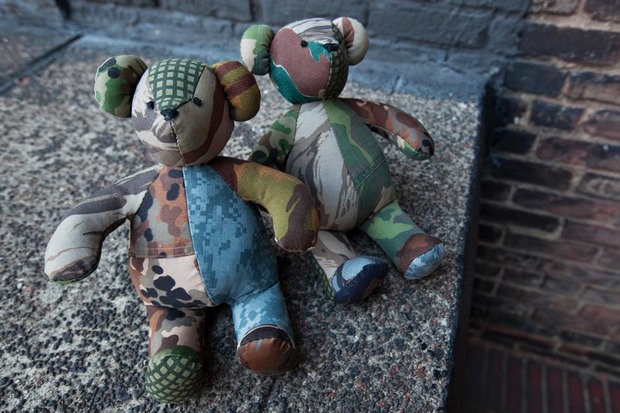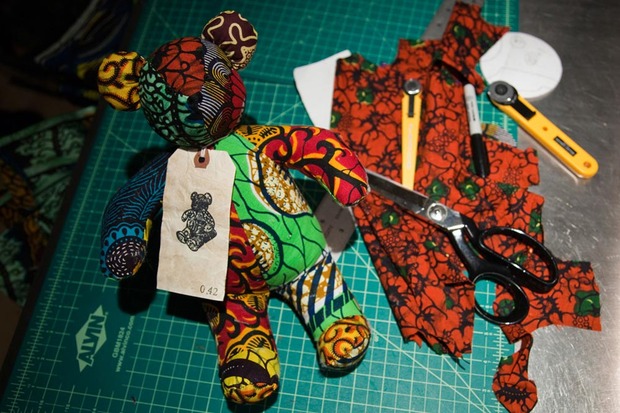Kumanokoido
Malian print and camouflage teddy bears for a good cause

by Blair Milbourne

In December of 2011, designer Junichi Nakane headed to Mali on what some might call a cross-cultural expedition of friendship. Journeying through the country, he noticed the lack of clean water sources in the village of Tireli in the central plateau region, and his friend cited the high cost of building a well in the village. Upon returning home to Fort Greene, Brooklyn, Nakane began toying with ways to contribute to the community of Dogon people in the central plateau beyond writing a check: “I wanted to make sure that I did something creative as opposed to monetary—that’s boring!” said Nakane.
A self-proclaimed enthusiast of Polo Ralph Lauren, Nakane has a special affinity for the brand’s Polo Teddy Bear series. Beyond his admiration of the toy line, Nakane considers the teddy bear to be a symbol of friendship that transcends socio-demographic lines. He pitched his friend, Saki Yahagi Oki, on the idea of taking the waxed pattern fabrics used in daily Malian life along with fabrics from other global communities and fashioning them into a stuffed teddy bear. An avid sewer, she offered to create a prototype for him. In September 2012, Nakane found himself with a booth space at the Brooklyn Flea with 15 hand-sewn bears that sold out in less than two hours—and that was the start of Kumanokoido.

The name Kumanokoido is a hybrid word created by Nakane himself: “Kumanoko” is Japanese for “cub” or “baby bear” and “Ido” means “water well.” After assembling a sewing crew of five—including his mother and Oki—Nakane set his sights on raising at least $15,000 to build a well for the people of Tireli.
Thus far Nakane has relied on word of mouth and his tight-knit circle of friends to ignite his fundraising efforts, and he will continue to allow the grassroots marketing to take the front seat for his project. For now, he aims to hone in on sourcing the best fabrics for his bears, whether they’re purchased directly from Mali or in NYC’s dense Garment District.

Nakane’s “Camo Bear”—using a variety of camouflage used by militias around the world—has been a huge hit. His sourcing methods for the pattern are far more discreet than for the African fabrics, citing a very close camo-collecting friend who helped jumpstart the exclusive line by providing him with some rare pieces. “The Camo Bears are made up of camouflage from different countries [U.S., Japan, Korea, Brazil, and Vietnam are just a few] that in all reality may not get along that well,” Nakane explained. “This is my way of depicting anti-war and [a hopeful] unity between these countries.”
Nakane alluded to future plans, saying, “As for right now, I have no intentions of making other animals because the bear is a globally accepted symbol of friendship and my project is based around that [perception]. This is about how I can creatively build and maintain friendships and help people to eventually do the same, and in the process give something of practical use to a community of people that welcomed me.”
Images courtesy of Junichi Nakane









